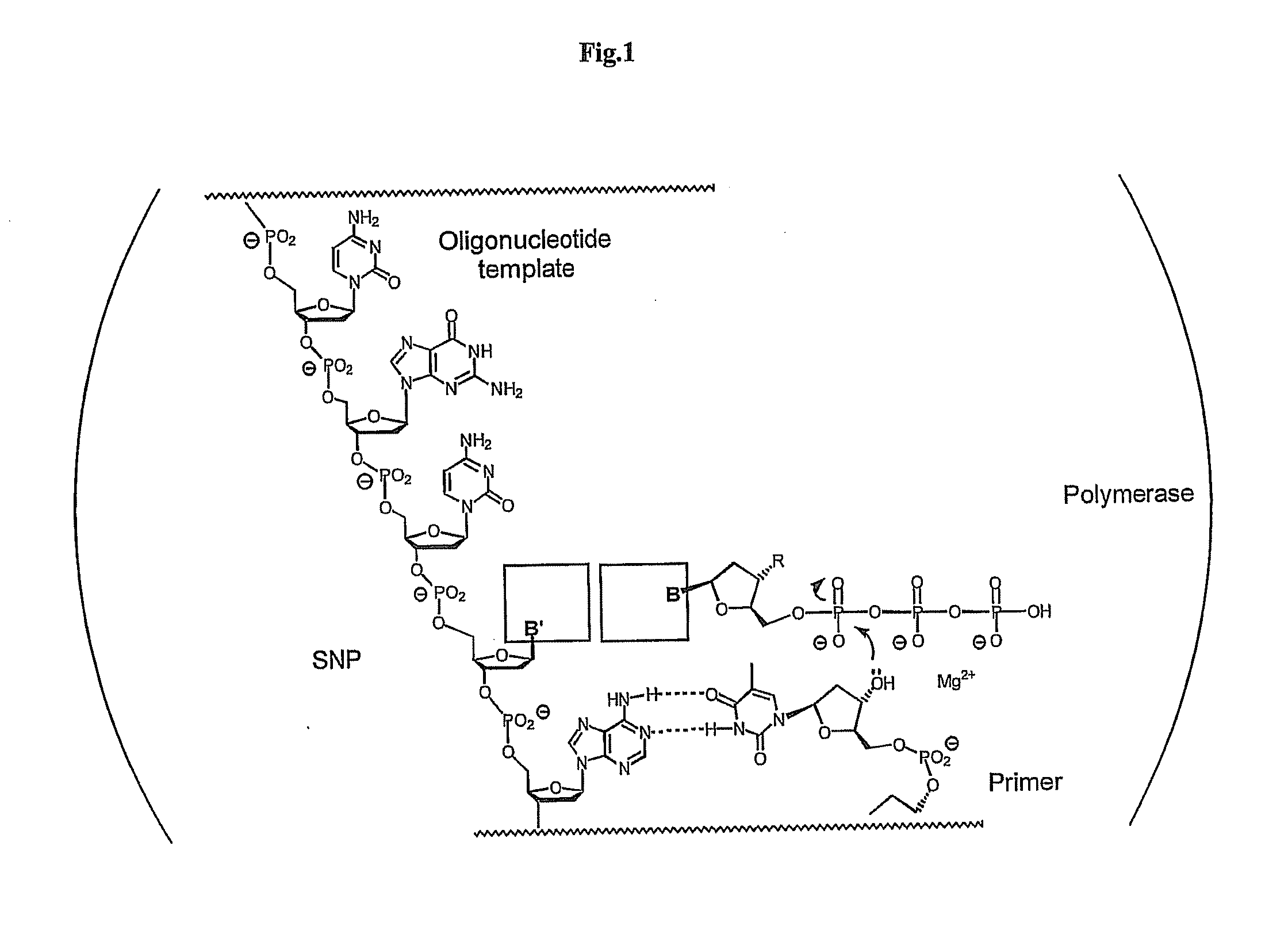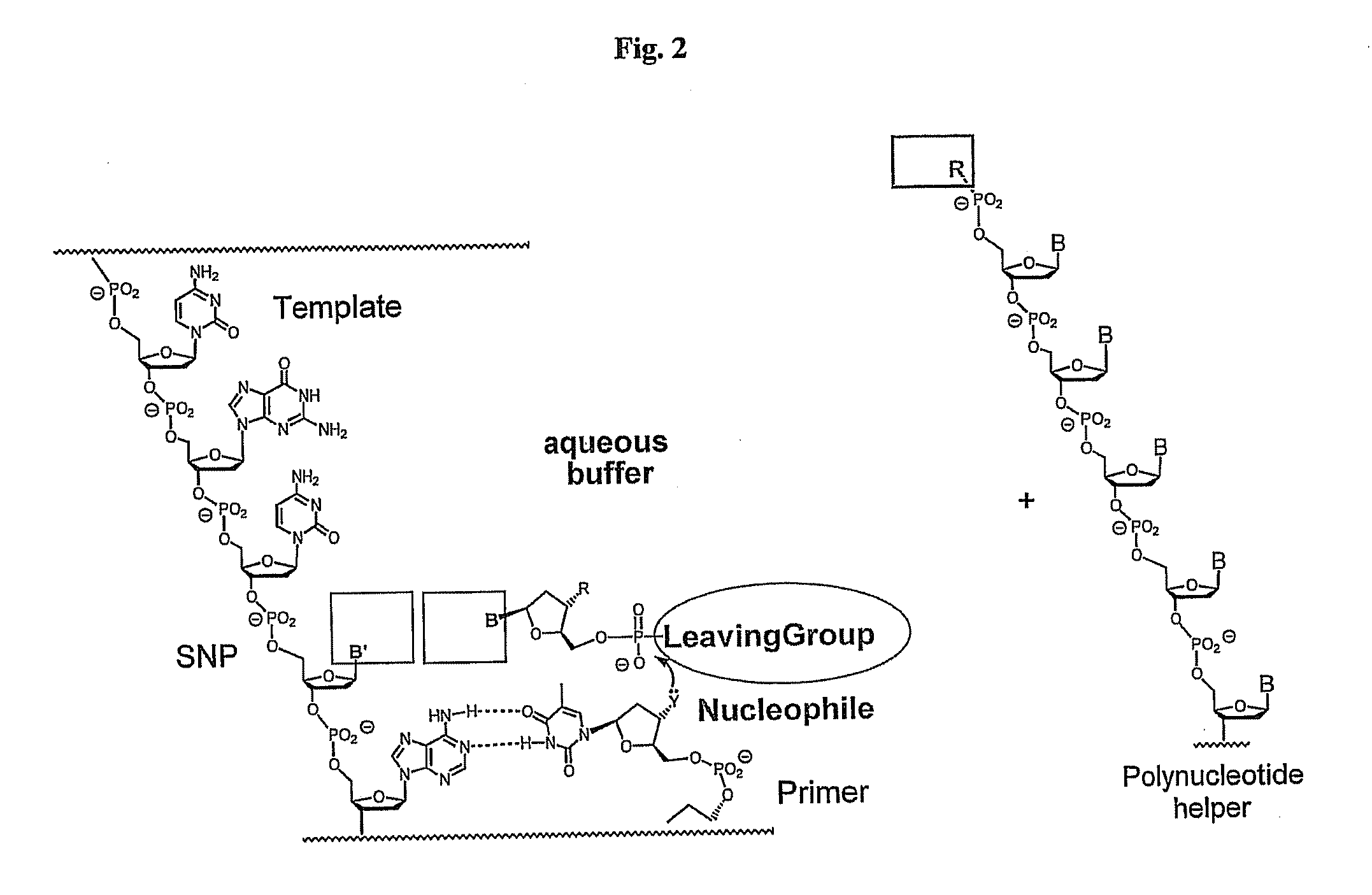Polymerase-independent analysis of the sequence of polynucleotides
a polymerase and polynucleotide technology, applied in the field of polymerase-independent analysis of the sequence of polynucleotides, can solve the problems of incomplete loss of epigenetic information carried by 5-methylcytosine during pcr amplification, and the inability to directly identify the positions of 5-methylcytosine by sequencing,
- Summary
- Abstract
- Description
- Claims
- Application Information
AI Technical Summary
Benefits of technology
Problems solved by technology
Method used
Image
Examples
examples
1. Synthesis of 1-(2′-Deoxycytidine-5′-O-phosphor-5′-P-yl)-2-azabenzotriazolide
[0111]2′-Deoxycytidine-5′-monophosphate (124 μmol, 40 mg) in 5 ml DMF was treated with 1-hydroxy-7-azabenzotriazole (248 μmol, 33.6 mg), O-(7-azabenzotriazol-1-yl)-N,N,N′,N′-tetramethyluronium hexafluorophosphate (248 μmol, 94.4 mg) and diisopropylethylamine (32 μl, 186 μmol). The suspension was stirred 1 h at room temperature under argon. The product was then precipitated by adding to an ice cold solution of NaClO4 (46 mg, 0.38 mmol) in dry acetone (23.4 ml) and dry diethylether (14.6 ml). After stirring for 20 min at 0° C., the precipitate was isolated by centrifugation. The solid was washed two times with acetone / Et2O (1:1, v / v, 10 ml) and two times with acetone (10 ml). After drying at 0.1 Torr overnight, the azabenzotriazolide title compound was obtained as pale yellow solid. It was stored under argon at −80° C. until usage. Yield: 29% 31P NMR (500 MHZ, DMSO-d6) δ=−0.86 ppm.
2. Synthesis of 1-(2′-Deox...
PUM
| Property | Measurement | Unit |
|---|---|---|
| temperature | aaaaa | aaaaa |
| pH | aaaaa | aaaaa |
| temperature | aaaaa | aaaaa |
Abstract
Description
Claims
Application Information
 Login to View More
Login to View More - R&D
- Intellectual Property
- Life Sciences
- Materials
- Tech Scout
- Unparalleled Data Quality
- Higher Quality Content
- 60% Fewer Hallucinations
Browse by: Latest US Patents, China's latest patents, Technical Efficacy Thesaurus, Application Domain, Technology Topic, Popular Technical Reports.
© 2025 PatSnap. All rights reserved.Legal|Privacy policy|Modern Slavery Act Transparency Statement|Sitemap|About US| Contact US: help@patsnap.com



